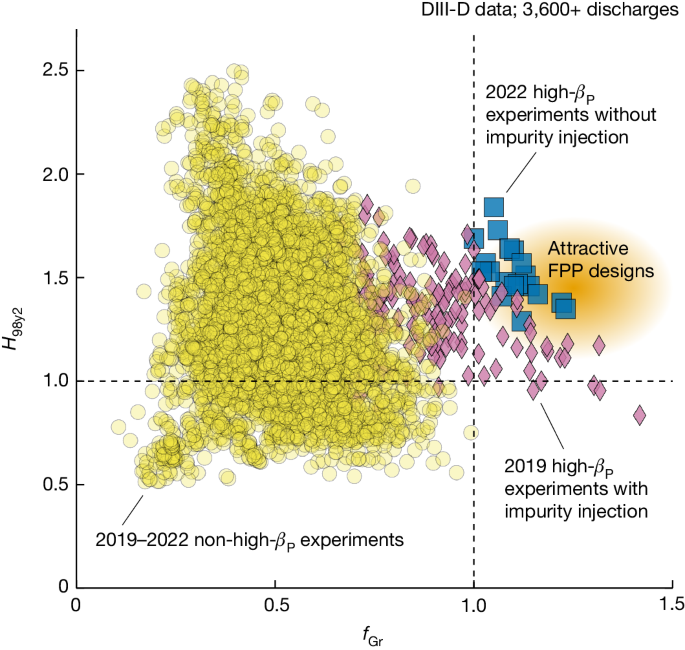It only took 2.2 seconds inside the Tokamak DIII-D fusion reactor to take another major step forward in the production of fusion energy.
Until now, it was thought that there was a point - known as the Greenwald limit - above which the density of the plasma could not be increased without it escaping the clutches of the magnets, potentially damaging the reactor. However, it was also known that increasing the density would be crucial to increasing production.
In a study published this Wednesday in Nature, researchers at General Atomics in San Diego, USA, have revealed a way of increasing plasma density, proving that it can be stable.

The physicists ran the National Fusion Facility's DIII-D tokamak at an average density 20% above the Greenwald limit.
As New Scientist explains, the team used a higher density in the core of the "doughnut-shaped" plasma to increase production, allowing it to plunge to the nearest edges of the containment vessel to descend below the Greenwald limit, thus preventing any plasma leakage.

"These plasmas are very complicated. A small change in conditions leads to a big change in behavior. And experimentally, it's been more of a trial and error approach, where you try lots of different configurations and basically see which one is best," explained Gianluca Sarri, a researcher at Queen's University Belfast in the UK.
"It's about forcing the plasma to do something that is completely against its nature, that it doesn't want to do," he added.
The DIII-D's plasma chamber has an outer radius of just 1.6 meters and it is not yet known whether the same method would work in the next-generation tokamak, which will have a radius of 6.2 meters and is expected to create plasma as early as 2025.
"This was done on a small machine. If we take these results and extrapolate them to a larger machine, we can expect to be in a situation where significant gains and energy production can be achieved over a significant period of time," commented Sarri.
According to the researcher, the DIII-D experiment was based on a mixture of approaches that are not exactly new, but which together seem to have created a promising approach.
The study's first author, Siye Ding, admitted that - although expensive - the next step needs to be taken: "Research is currently going in many different directions. My hope is that this article will help focus efforts worldwide."






